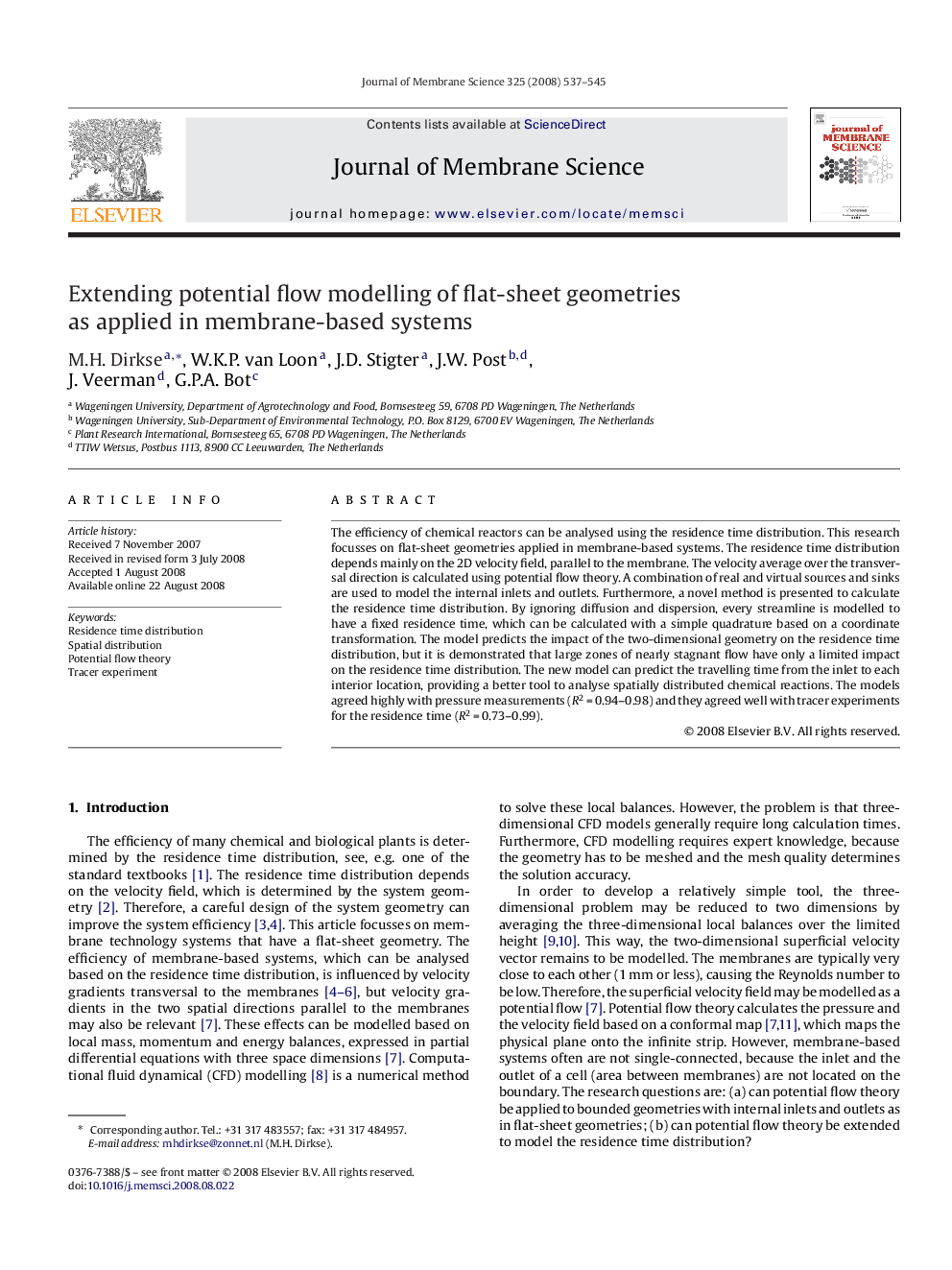| Article ID | Journal | Published Year | Pages | File Type |
|---|---|---|---|---|
| 637544 | Journal of Membrane Science | 2008 | 9 Pages |
Abstract
The efficiency of chemical reactors can be analysed using the residence time distribution. This research focusses on flat-sheet geometries applied in membrane-based systems. The residence time distribution depends mainly on the 2D velocity field, parallel to the membrane. The velocity average over the transversal direction is calculated using potential flow theory. A combination of real and virtual sources and sinks are used to model the internal inlets and outlets. Furthermore, a novel method is presented to calculate the residence time distribution. By ignoring diffusion and dispersion, every streamline is modelled to have a fixed residence time, which can be calculated with a simple quadrature based on a coordinate transformation. The model predicts the impact of the two-dimensional geometry on the residence time distribution, but it is demonstrated that large zones of nearly stagnant flow have only a limited impact on the residence time distribution. The new model can predict the travelling time from the inlet to each interior location, providing a better tool to analyse spatially distributed chemical reactions. The models agreed highly with pressure measurements (R2Â =Â 0.94-0.98) and they agreed well with tracer experiments for the residence time (R2Â =Â 0.73-0.99).
Related Topics
Physical Sciences and Engineering
Chemical Engineering
Filtration and Separation
Authors
M.H. Dirkse, W.K.P. van Loon, J.D. Stigter, J.W. Post, J. Veerman, G.P.A. Bot,
